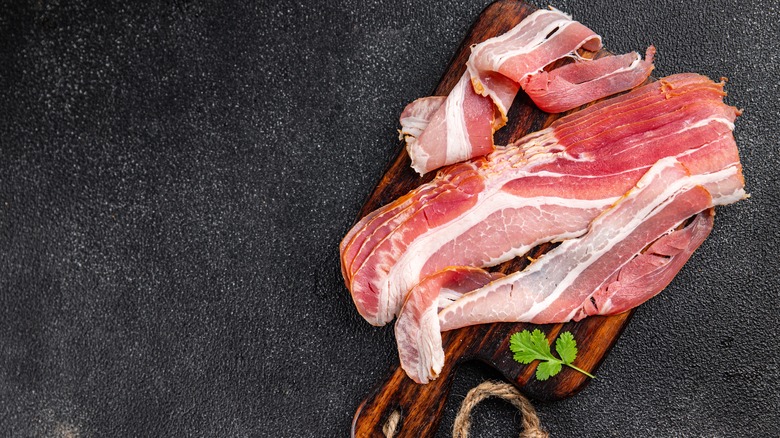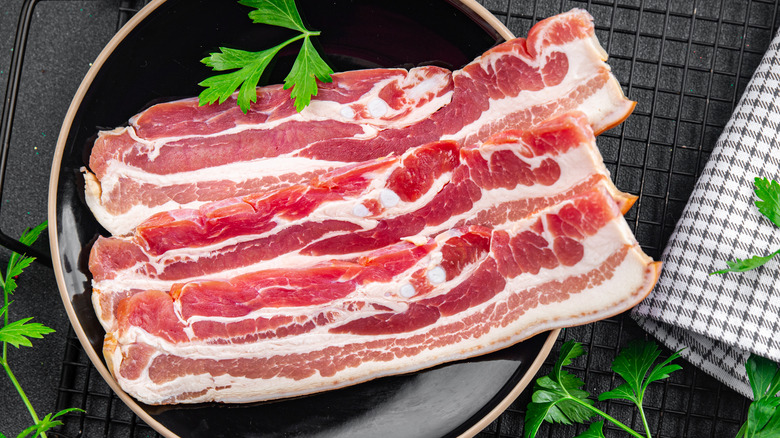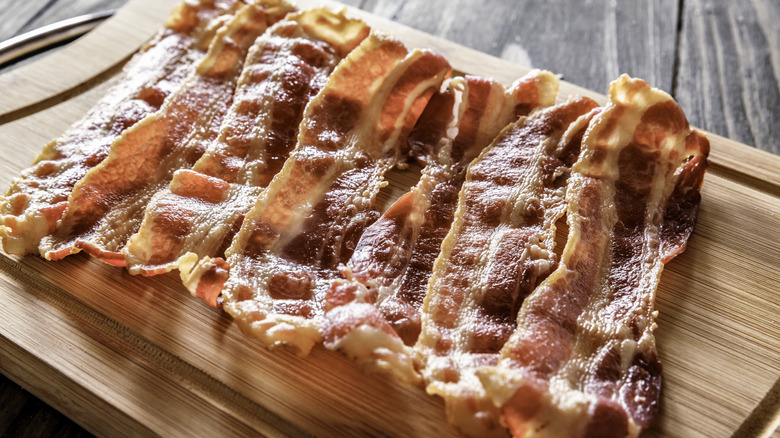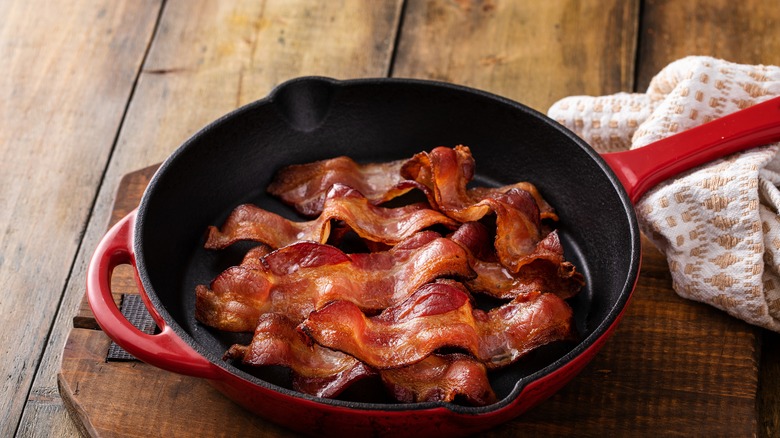What's The Difference Between Center-Cut And Regular Bacon?
For those who enjoy pork, bacon is one of its most convenient and tastiest forms. From its packaged state, bacon can be easily prepared into a standalone crispy bite or lend a delectable touch to a variety of dishes. With such popularity in American cuisine, it's no surprise the cured product comes in many different forms. At the grocery store, you may have noticed it's available in a version called center cut.
The name may sound misleading, alluding to a bacon cut sourced from a different origin. The center cut is made from the same piece of meat as reliable regular bacon, the only difference is the fat tips have been trimmed. As a result, it'll work just as well in most cooking applications, with a smaller amount of grease released during preparation than with regular bacon. This does have its pros and cons, making it a cut worthy of consideration.
What is center-cut bacon?
Although its name may suggest a different origin location, center-cut bacon comes from the same source as regular old American bacon. There are no curveballs in its creation method; the bacon is flavored and processed in the same manner. Its differentiator is the amount of trimmed fat.
Each strip is sliced to a smaller width, with the tips sliced off on both ends. Visually, it may not seem like a large increment, but it makes for a 25-30% difference in fat content. Nevertheless, the flavor isn't impacted; the result will be indistinguishable once the dish is done. Plus, many groceries price a package of this trimmed pork the same as a regular cut, although it'll contain 25% less bacon. So, for budget shoppers, it's not the best value. However, for those wanting to accentuate bacon's meaty qualities, it's a reasonable purchase. And it'll leave behind less grease in the pan once cooked.
What is regular bacon?
Bacon simply refers to salted and fatty pork meat usually sourced from the back or belly. As a result, many different products are included under the term, from Canadian-style round bacon to Italian guanciale. The term regular refers specifically to American-style bacon, which is the long, streaky pork cut beloved in the U.S.
This product is made from pork belly, which is then cured. In some instances, it is smoked and flavored, but it remains raw. Typically, it's then sliced into those long and fatty pieces so iconically beloved. However, it can also be sold uncut — making it slab bacon — as well as butchered into extra thin or thick slices.
Regular bacon is known for its particularly high fat content, with less than 9% protein by weight, unusual for a meat product. However, this quality is what gives its delightfully crispy texture, so beloved by home cooks.
Center-cut bacon reduces some of the regular cut's fattiness
Bacon works well in a dizzying number of recipes, and for the most part, center cut and regular will work interchangeably. The two cuts have a similar appearance, with only those fatty ends missing on the center cut. As a result, the difference may not even be recognizable when it's baked, pan-fried, or microwaved and served on a breakfast plate.
However, each style can add a different touch in specific scenarios. Meat lovers should go for the center cut since it'll create more of those delectable brown bites. That makes it the better choice for creating bits to use as a topping on mashed potatoes, pizza, or a salad. Plus, if you're making a bacon burger, you may not want that extra fat atop the beef. Remember you can always purchase the classic version and snip off some of the fat before preparation.
Stick to regular-cut bacon when that tasty fat is necessary to amplify a dish. Whenever ingredients are rendered when it's melted, the classic style is the move. It adds more character to stew and soup bases and makes for richer sauces. Plus, it's a better call when bacon's the principal cooking fat, like in a bacon-wrapped jalapeño popper. Both center-cut and regular bacon offer a tasty dose of bacon goodness, so there are seldom pitfalls based on the cut selection.



